How To Use TagLab

TagLab is a cutting-edge AI-powered software that simplifies the task of monitoring, labeling, and analyzing coral reef imagery. Designed for marine researchers, conservationists, and environmental organizations, it reduces the time-consuming manual process of tagging underwater features by automating much of the work.
With sustainability and environmental monitoring more important than ever, TagLab is a game-changing solution for ocean health research and coral reef conservation. If you're exploring other purpose-driven technologies, be sure to visit our AI Environmental Tools section or check out the full tool list on the I Need AI homepage.
What Is TagLab?
TagLab is an open-source software platform that uses artificial intelligence to identify and annotate features in coral reef images. It helps marine biologists and oceanographers label large image datasets with greater accuracy and in a fraction of the time compared to traditional methods.
Official Website: https://taglab.isti.cnr.it
The software is developed by ISTI-CNR (Institute of Information Science and Technologies of the Italian National Research Council) and is widely used in marine biology research projects across the globe.
Key Features of TagLab
AI-Powered Image Annotation
Automatically detects and labels coral species, algae, sand, and other seabed components using deep learning.
Manual and Assisted Tagging Tools
Users can refine predictions or create their own tags, combining human expertise with AI for greater accuracy.
Custom Dataset Training
TagLab supports training on custom image datasets to adapt its recognition capabilities to different reef types or research goals.
Visualization and Analysis
TagLab offers side-by-side image comparisons, growth trend visualizations, and area-based coverage statistics for tagged regions.
Time Series Tracking
Monitor changes over time by aligning images from different field trips or expeditions.
Interested in sustainability data beyond oceans? Read How To Use Ecodesk for carbon tracking and ESG reporting at scale.
How To Use TagLab
Official Website: https://taglab.isti.cnr.it
Step 1: Download and Install the Software
Visit the official website and download the latest version of TagLab for your operating system (Windows or Mac).
Step 2: Load Underwater Image Data
Import individual reef images or full image sets into the TagLab interface. The software supports JPEG and PNG formats as well as georeferenced images.
Step 3: Let the AI Model Analyze the Images
Use built-in or custom-trained models to automatically identify and label corals, sand, algae, and other marine components.
Step 4: Manually Adjust Labels if Needed
Use TagLab’s editing tools to add or refine annotations for scientific accuracy. This hybrid approach boosts both speed and precision.
Step 5: Visualize and Export Results
Generate statistical reports or visual maps that summarize the tagged regions. You can export these for use in GIS platforms or research documentation.
Step 6: Track Reef Changes Over Time
Align historical images from the same site and use time-lapse tracking features to analyze coral growth, bleaching, or recovery trends.
Want to explore another AI that uses imagery in environmental science? See How To Use FarmLab to discover AI-driven soil and crop analytics.
Who Should Use TagLab?
Marine Researchers
TagLab helps scientists conduct faster and more thorough coral reef assessments.
Environmental NGOs
Conservation groups use it to monitor reef health and measure the impact of restoration projects.
Academic Institutions
Universities incorporate TagLab in oceanography, ecology, and AI research programs.
Government Agencies
Used by marine resource managers for policy-making, reef protection, and monitoring programs.
Key Benefits of TagLab
-
Reduces tagging time by 70–80%
-
Enhances labeling accuracy with AI
-
Offers flexibility through custom training
-
Provides measurable insights into reef health
-
Supports open science through open-source availability
Looking for AI tools focused on data monitoring and risk detection? Explore How To Use RepRisk to learn how companies manage ESG risks with AI.
Final Thoughts
TagLab brings the power of artificial intelligence to one of the planet’s most critical ecosystems — coral reefs. Whether you’re monitoring reef bleaching, measuring recovery after a storm, or conducting biodiversity studies, TagLab makes it possible to work faster and smarter.
As ocean temperatures rise and reefs face growing threats, this kind of automation is more than useful — it’s essential.
To find more tools that empower environmental sustainability through AI, explore the AI Environmental Tools section or return to the I Need AI homepage for more smart tech solutions.







